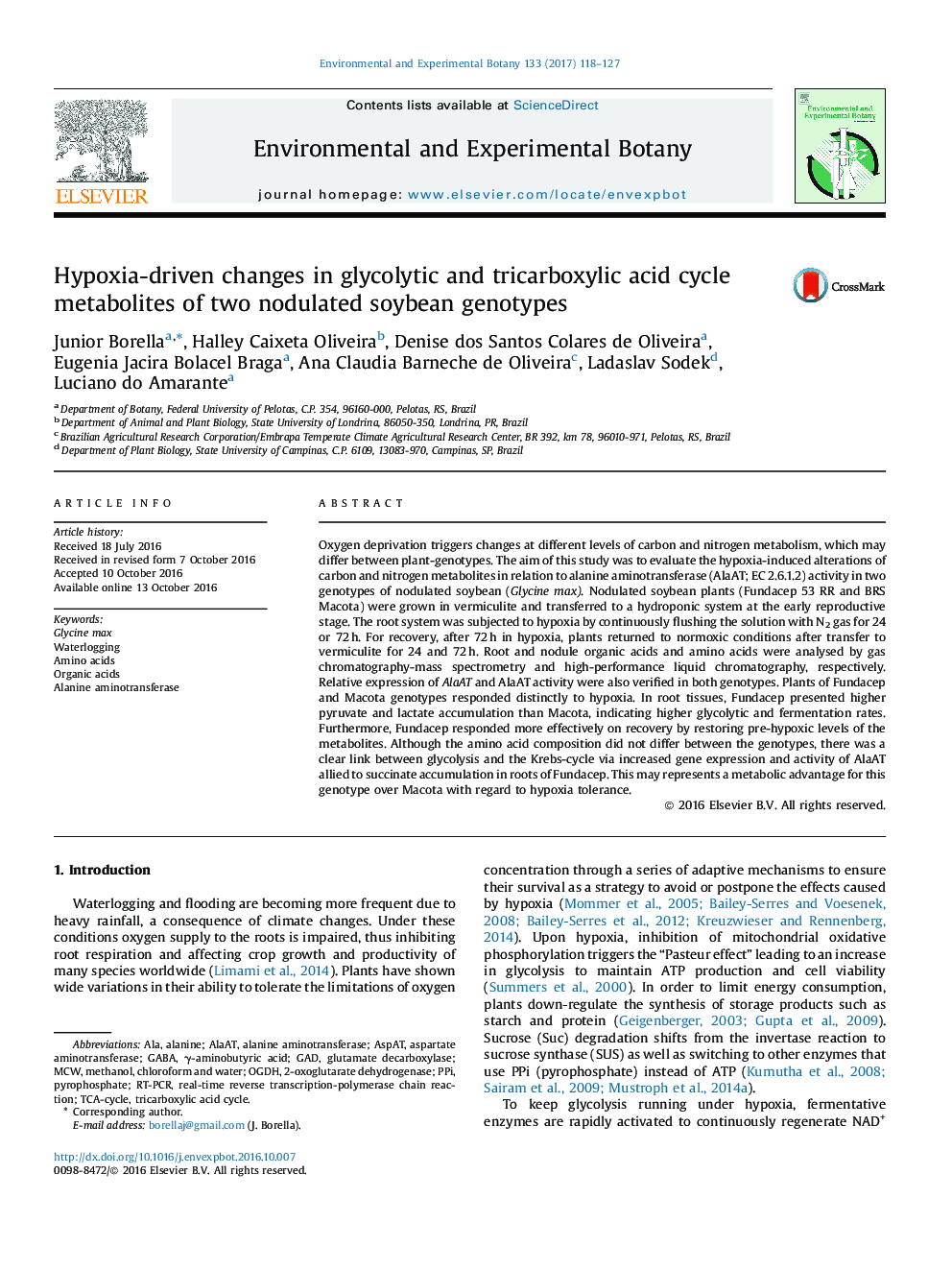| Article ID | Journal | Published Year | Pages | File Type |
|---|---|---|---|---|
| 6388824 | Environmental and Experimental Botany | 2017 | 10 Pages |
â¢Metabolic changes in waterlogged nodulated soybean genotypes.â¢Differences in glycolytic rate and fermentation efficiency in soybean genotypes.â¢Differential accumulation of succinate in root soybean genotypes.â¢Link between glycolysis and Krebs-cycle through AlaAT in soybean genotypes.
Oxygen deprivation triggers changes at different levels of carbon and nitrogen metabolism, which may differ between plant-genotypes. The aim of this study was to evaluate the hypoxia-induced alterations of carbon and nitrogen metabolites in relation to alanine aminotransferase (AlaAT; EC 2.6.1.2) activity in two genotypes of nodulated soybean (Glycine max). Nodulated soybean plants (Fundacep 53 RR and BRS Macota) were grown in vermiculite and transferred to a hydroponic system at the early reproductive stage. The root system was subjected to hypoxia by continuously flushing the solution with N2 gas for 24 or 72Â h. For recovery, after 72Â h in hypoxia, plants returned to normoxic conditions after transfer to vermiculite for 24 and 72Â h. Root and nodule organic acids and amino acids were analysed by gas chromatography-mass spectrometry and high-performance liquid chromatography, respectively. Relative expression of AlaAT and AlaAT activity were also verified in both genotypes. Plants of Fundacep and Macota genotypes responded distinctly to hypoxia. In root tissues, Fundacep presented higher pyruvate and lactate accumulation than Macota, indicating higher glycolytic and fermentation rates. Furthermore, Fundacep responded more effectively on recovery by restoring pre-hypoxic levels of the metabolites. Although the amino acid composition did not differ between the genotypes, there was a clear link between glycolysis and the Krebs-cycle via increased gene expression and activity of AlaAT allied to succinate accumulation in roots of Fundacep. This may represents a metabolic advantage for this genotype over Macota with regard to hypoxia tolerance.
